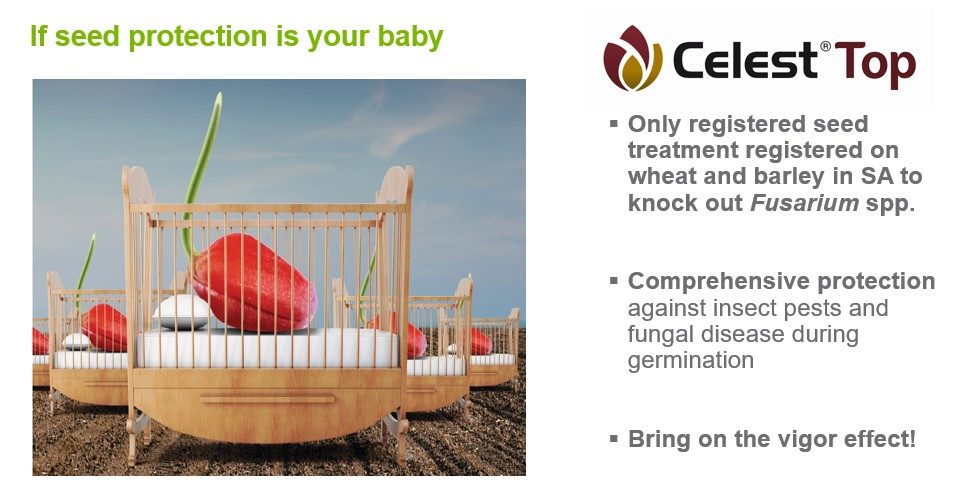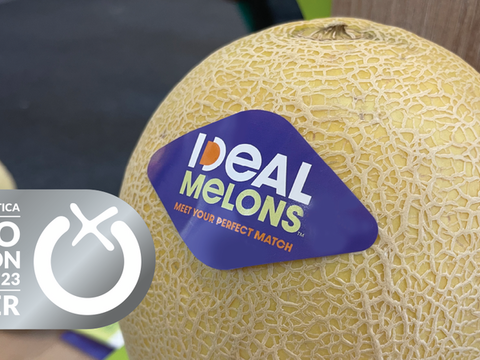Protect your wheat and barley seed against wilting
Annually small grain producers are confronted with a multitude of different production challenges that also erode their profit margins. Root rot diseases constitute one of these threats that affect the productivity of agricultural crops.
Root rot diseases are not only causing problems for South African farmers, but world-wide constitute an important part of the on-farm challenges facing farmers. What makes the situation more complex, is the fact that root rot diseases are usually caused by a root rot complex comprising more than one type of pathogen. Fungal and oomycete species are the predominant participants in the complex, while bacteria and viruses are also known to cause root rot.
The four most common root rot diseases that occur in barley and wheat are caused by fungi that live in the soil. These are Pythium spp. root rot, also known as seedling wilt, Fusarium root rot, Fusarium ear scorch, and Rhizoctonia root rot.
The fungi is common in all cultivated soils. The fungus can live in the soil on crop debris or as hardy oospores for a long time. Once the climate conditions are suitable with adequate moisture as well as a suitable host plant, the oospores will become active and infect crops on the field. Because these fungal diseases also occur on other crops such as maize and vegetables, it is quite difficult to control especially where crop rotation is not always an option.
Pythium spp. has a specific preference for juvenile tissue in young seedlings and hardly ever causes decay of mature plants. The fungus affects the germinating wheat and barley seedlings because it utilises the sugars stored in the endosperm. In the field weak, wilted, and small seedlings will be noticed. Infected seedlings usually show a reduced development of the root system that can have a negative effect on water and nutrient uptake and eventually reduce yield. Affected seedlings become stunted, develop brown, rotted roots, and may fall over.
Because the infection occurs at a very early stage, it is not always correctly diagnosed. Poor germination and emergence can be attributed to other causes such as poor-quality seed or other soil-borne diseases such as Rhizoctonia spp. or Fusarium spp.
Seed treatment is an excellent solution for preventative control. One of the best ways to achieve early protection is by treating the seed to prevent the infection of germinating seed. Seed treatments will also protect the emerging seedling for some time after germination. This will allow the seedling to develop a strong and healthy root system.
“We focus on treating seed against fungal infection so that crops can develop strong and healthy root systems that function optimally. Well-formulated products such as Syngenta’s CELEST® Top not only protect the seed and seedling, but also help ensure good and uniform crop establishment and the development of healthy root systems that will lay the foundation to maximise crop yield and quality,” says Stefan van Zyl, Business Manager Syngenta Seedcare in South Africa.
Seed treatments offer the following advantages:
- Ensures healthy and vigorous seed.
- Improved visual appearance of seed.
- Improved plantability of seed by using only the best polymer seed coatings that bind with the seed.
- Various seed treatment products can be applied on the seed simultaneously. This simplifies crop management during planting season.
- Germinating seed and young seedlings are protected from planting when they are at their most vulnerable.
- Proper protection during planting ensures realisation of the planned planting population.
- Enables healthy and strong root system development from an early stage to ensure effective uptake of water and nutrients.
- The chemicals are specifically formulated to be target specific.
.
CELEST® Top not only offers protection against Pythium spp. but also against Fusarium as well as other soil and seed borne pathogens, diseases, and insects. CELEST® Top is the only registered seed treatment against Fusarium in South Africa.
CELEST® Top is a flowable concentrate fungicide and insecticide with contact and systemic properties for control of diseases and insects affecting the crop as indicated during its implementation stage. It contains three active ingredients, providing protection against fungicide and insecticide activity without affecting the germination of the treated seed.
The two fungicides have complimentary modes of action. Difenoconazole (triazole) is absorbed by the roots and translocated through the seedling and translaminar, exerting systemic action. It inhibits the development of the mycelium of fungi and prevents the development of disease symptoms. Fludioxonil (phenylpyrrole), a contact fungicide with residual activity, interferes with the process of osmotic regulation through inhibition of protein kinase.
The combination of both actives gives a wide spectrum of disease control and persistence of action, protecting against pathogens affecting seeds and seedlings.
CELEST® TOP also provides control of soil insects through thiamethoxam (neonicotinoid). Thiamethoxam is absorbed by the roots, moving systemically to the rest of the seedling. It has quick action on contact and stomach and affects the nervous system.
Contact you nearest agricultural agent or Syngenta representative immediately if you suspect any resistance, as well as for the correct guidelines and strategies for the control of plant diseases.
For more information, visit our website at www.syngenta.co.za
READ THE PRODUCT LABEL BEFORE USE.
CELEST® Top (not exclusively) contains fludioxonil (phenylpyrrole) 25 g/l, difenoconazole (triazole) 25 g/l, and thiamethoxam (neonicotinoid) 262.5 g/ (Reg. Nr. L10418, Act Nr. 36 van 1947).
WARNING.
Suspected of damaging fertility. Suspected of damaging the unborn child. Very toxic to aquatic life with long-lasting effects
CELEST® Top is a registered brand of a Syngenta Group of Companies, Syngenta South Africa (Edms.) (Pty) Ltd, Private Bag X60, Halfway House, 1685. Tel. (011) 541 4000.

